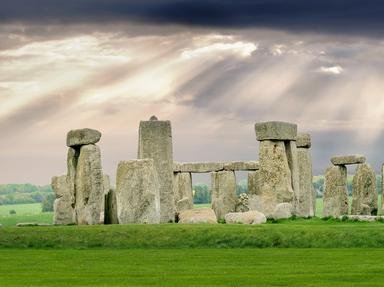Quiz Answer Key and Fun Facts
1. Firstly, the Nazca Lines are phenomena known as 'geoglyphs', or simply, large drawings made on the ground. Among the largest measure up to 900 feet and the entire land area they occupy is nearly 200 square miles. The Nazca Lines are famous for their size, but they have another remarkable feature. What is it?
2. The Nazca Lines consist of several straight lines and other stylized figures. These figures reflect much of the wildlife of Peru. Which of the following is NOT a figure represented by the Nazca Lines?
3. The Nazca Desert in Peru has been home to these large creations since they were made from 200 BC to AD 600. The desert is covered by small pebbles containing ferrous oxide, which with exposure to several elements, has given them a dark patina. Therefore, the Nazca Lines are made by moving the dark pebbles and revealing the lighter soil underneath. Their intricate nature has survived due to a lack of rainfall and what else?
4. There are many theories as to why the Nazca Lines were made. The one that gets the most attention, and is outlined in the book "Chariots of the Gods", is that the lines are so vast and complex, that they had to have been made by extraterrestial beings. Some of the geoglyphs seem to depict these "visitors", and several of the lines are trapezoidal in shape. The shape and size of these lines causes some to believe they serve which purpose?
5. Since water was scarce in the Nazca Desert, the Nazca Lines were thought to help them with the collection of that valuable resource. One theory claims that the geometric lines represent paths to water sources and that the animal glyphs were meant to display discovered underground water reservoirs. This theory seems plausible at first, but then a supernatural explanation arises. The lines were supposedly created through an unproven practice often used to find water known as 'dowsing', an art known by what other name?
6. One commonly accepted idea is that the Nazca Lines were meant to be offerings to the Nazca gods, who would be able to see them from the heavens. The rationales behind this thinking is that during the time period of the lines' construction, a series of events occurred that caused a pupil-like feature, or "Eye of God", to be seen in the sky. What events might these be?
7. Another outlandish theory was offered by some local archaeologists who believed that the cultural history of the Nazca offers a clue. They suggest that the Nazca Lines may be offerings to the gods, but also have more local purposes. A certain ceremonial item the ancient Peruvian populations used had effects that caused severe hallucinations resulting in the Nazca building giant lines so they could "fly over" them to view them. What might this item be? (HINT: it's in the title)
8. One suggestion is that the lines were paths the Nazca followed during ceremonies, or they were "walking temples" in a sense. They would walk along the glyphs, praying to the gods for water. According to this theory, the lines don't point to water and aren't meant to help find water, but to guide the Nazca along as they pray for water. Why is this theory so appealing to archaeologists?
9. One of the earliest theories proposed by famed archaeologist Maria Reiche was that the Nazca Lines were somehow a giant astronomical guide or calendar. The lines pointed to several astronomical bodies and could have been used to predict solstices in order to be prepared for planting and harvest time. This was accepted for a long time, but there are several arguments that weaken its plausibility. Which of the following is NOT one of those arguments?
10. There is no shortage of theories about the Nazca Lines and their origins. Their purpose is still unknown, and it is unlikely we will ever truly know what they were meant for. Nonetheless, international interest in preserving the site is high priority. In 1994, UNESCO (United Nations Educational, Scientific and Cultural Organization) gave the Nazca Lines what special status?
Source: Author
trident
This quiz was reviewed by FunTrivia editor
bloomsby before going online.
Any errors found in FunTrivia content are routinely corrected through our feedback system.

